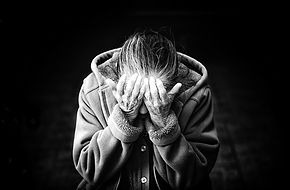We had compassion, what happened?


As State Fire Chaplain, I review entry questionnaires completed by incoming recruits registering for the Firefighter I and II programs at the South Carolina Fire Academy. I repeatedly see specific comments that include:
“I want to do something where I make a difference in people’s lives.”
“I have always liked helping people. I want to give back to my community.”
“I want to serve and protect the community and its citizens.”
But what will happen to these recruits? How many will last long term? Statistics show burnout and compassion fatigue are real threats to their careers. Other studies show varying levels of burnout effect between 17 and 40 percent of firefighters. This impacts the care they give as well as their job satisfaction and, ultimately, their retention. The fire service depends heavily on volunteer departments to meet the needs of rural communities, and volunteers are just as susceptible. Burnout and behavioral health issues hit volunteer departments hard. Can chaplains be part of the solution?
In the book Compassionomics: The Revolutionary Scientific Evidence that Caring Makes a Difference, researchers Stephen Trezeciak and Anthony Mazzarelli explain how numerous attempts to address burnout and compassion fatigue have been short-sighted.
As one who has studied compassion fatigue and how it manifests itself with first responders, their research made me stop and think. Instead of pulling back from what causes us burnout and compassion fatigue, they encourage us to press in and to exhibit compassion all the more—to enter into the pain of others deliberately. That’s because the exercise of compassion is not only significant for the health of those we treat. It’s good for our psychological health, too:
“Burnout isn’t just about being overworked; it’s also about the absence of meaningful human connection in one’s work.”
Trezeciak and Mazzarelli write about healthcare providers, but it’s not hard to make the leap to first responders and chaplains. We, too, are called to show compassion. Chaplain Dan Nolta also addresses this point in his book Compassion: The Painful Privilege,
“Compassion is the gift that ‘suffers with,’ the gift that wills us to walk alongside and enter into the pain, suffering, and woundedness of another. It is the gift that wills us to run toward the one in pain while others run away.”
This is the heart of public safety servants. Running in to help the hurting where others are running away. Compassion is the gift that helps keep us in touch with our humanity and our original calling as first responders.
Chaplain Dan Nolta continues:
“For a lot of us in public safety it is compassion that got us into the job and it is compassion that is a major factor that drives us to do our job.”
What will change new Academy recruits into burned-out firefighters who cannot show compassion or those who have left the service altogether?
Failure to deal wisely with the emotional aspects of the job may be part of the problem. Many push away emotion and the hard realities of being a first responder. They may focus more on the mechanics of the job and put-up walls to protect themselves from human needs.
It’s only natural. But the high levels of PTSD, suicide, and other problems first responders experience suggest we may not be dealing well with the human aspects of the calls and our reactions to them. It would seem the “Suck it up, Buttercup!” mentality that we have so long held to has contributed to some of our major problems in public safety.
Maybe we need a shift at the core of our public safety agencies. In reflecting on a study of healthcare workers, Trezeciak and Mazzarell point out,
“Researchers also measured the healthcare workers’ emotional exhaustion, which is a key component of burnout. They found that a compassionate culture in the workplace was associated with less emotional exhaustion among these health care workers.”
There is no reason to believe police and fire are any different in this respect.
Five Thoughts to Consider
We should send a chaplain on every call where other personnel lack the time or bandwidth to show compassion. In the midst of an emergency operation, we cannot always exhibit compassion. Still, somebody in the public safety organization should be doing this. The chaplain is the wise choice.
We should encourage first responders to be more compassionate rather than pulling back. Many recruits come into the field of public safety with an outlook of compassion for their neighbors. While the hurts and pains of this job will affect their lives, we should not let this critical character trait go away. Instead, we should teach them how to integrate compassionate service into each response. This goes to the core of one’s spirituality and worldview.
Compassion needs to be a hallmark of our public service agencies. While there are times we may have to be more concerned about the mechanics of public safety, compassion must still be exhibited by our public safety agency through our chaplains during the call and by all members after the call. This must be the culture we create for our agencies.
We must recognize that compassion is not just a nicety for when we have time. We must continue with the compassion toward our fellow human beings that we had when we came to our public safety agencies as recruits.
We must realize that even though we need to have compassion for others, we must show compassion toward ourselves. We must treat our bodies, minds, and spirits right - if not, we will wake up one day and realize we have nothing to give.
